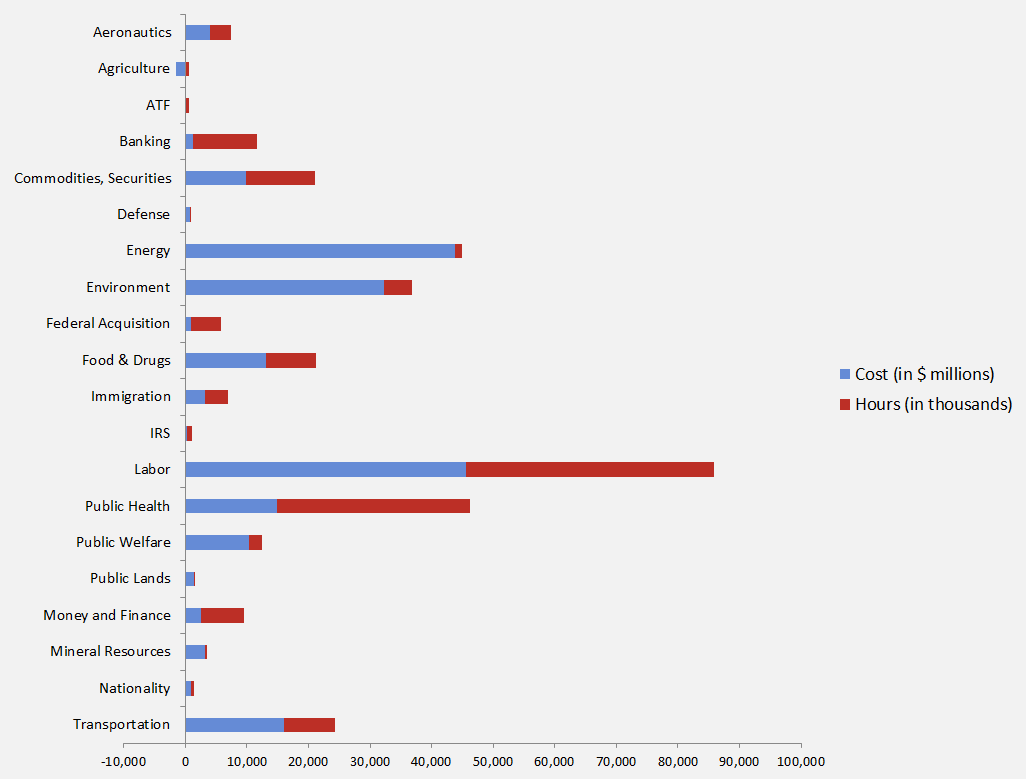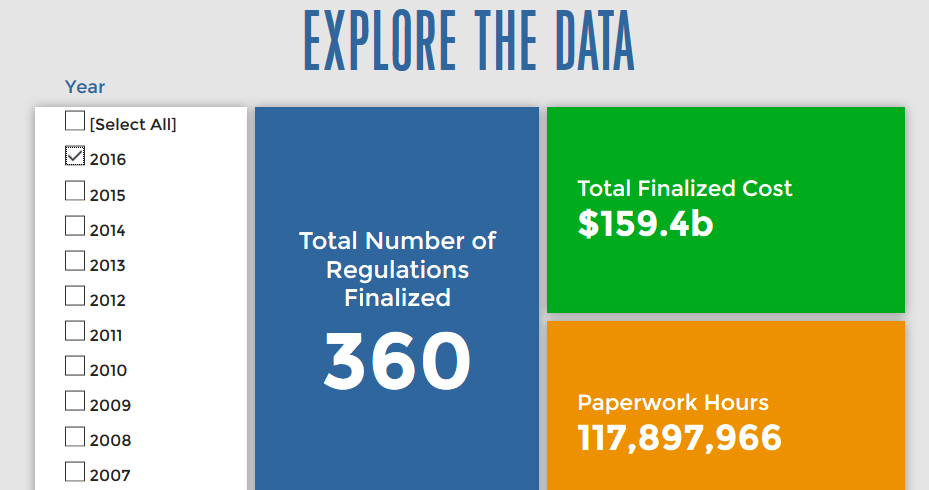Week in Regulation
December 12, 2016
$6 billion in Midnight Burdens
The White House released 20 regulations this week and regulators published $6 billion in new regulatory costs. Combined with final rules, the total regulatory burden this week has exceeded $10 billion. Annual costs were $1.2 billion, compared to $1.4 billion in benefits; paperwork grew by 2.6 million hours. The per capita regulatory burden for 2016 is $633.
Regulatory Toplines
- New Proposed Rules: 46
- New Final Rules: 86
- 2016 Total Pages of Regulation: 89,356
- 2016 Final Rules: $159.4 Billion
- 2016 Proposed Rules: $45.9 Billion
The American Action Forum (AAF) has catalogued regulations according to their codification in the Code of Federal Regulations (CFR). The CFR is organized into 50 titles, with each title corresponding to an industry or part of government. This snapshot will help to determine which sectors of the economy receive the highest number of regulatory actions.
The largest final rule this week established entry-level requirements for commercial vehicle operators. The rule would require a prescribed instructional program, check driving records, and share information with state licensing agencies. The total costs are $3.6 billion, with $367 million in annual costs. For this rule, annual costs actually exceeded benefits, yet the agency and OIRA went forward with the regulation regardless.
Regulators stuck with the vehicle safety theme this week and proposed a measure that would add new safety standards for rail service up to speeds of 200 mph. It also sets standards for crashworthiness and occupant protection. Total costs reach $4.6 billion, with $157 million in annual burdens, and $569 million in benefits.
The Department of Transportation also finalized its “Commercial Driver’s License Drug and Alcohol Clearinghouse” rule this week. It would impose $1.3 billion in total burdens, but would also include more than 1.8 million new paperwork burden hours.
Tracking Midnight Regulation
This week, OIRA received five regulations, down from six last week; all were final rules, and one is economically significant. OIRA discharged 20 regulations, up from 12 last week, with two economically significant measures. At its current pace, OIRA will set a record for regulatory output in the month of December during a presidential election year. Notable regulations released last week include:
- Paid Sick Leave for Federal Contractors
- World Trade Center Health Program
- Terrorism Risk Insurance Program
For the month, OIRA has concluded review of 34 regulations, more than any other December during a midnight period. Throughout the year, OIRA averaged about two regulations per day; this rate has increased to 4.8 per day. Since the House has adjourned for the year, the carryover provision for the Congressional Review Act should begin on May 27, 2016. Once the House and Senate return next year, they will have until at least mid-May to review rules and vote on resolutions of disapproval.
Affordable Care Act
Since passage, based on total lifetime costs of the regulations, the Affordable Care Act has imposed costs of $51.6 billion in final state and private-sector burdens and 172.4 million annual paperwork hours.
Dodd-Frank
Click here to view the total estimated revised costs from Dodd-Frank; since passage, the legislation has produced more than 74.8 million final paperwork burden hours and imposed $36.5 billion in direct compliance costs.
Total Burdens
Since January 1, the federal government has published $205 billion in compliance costs ($159.4 billion in final rules) and has imposed 143.3 million in net paperwork burden hours (117.8 million from final rules). Click below for the latest Reg Rodeo findings.












